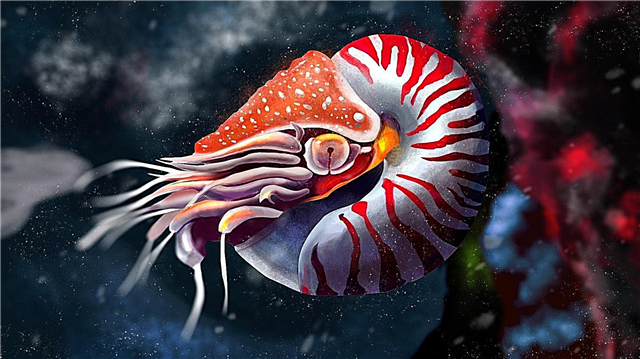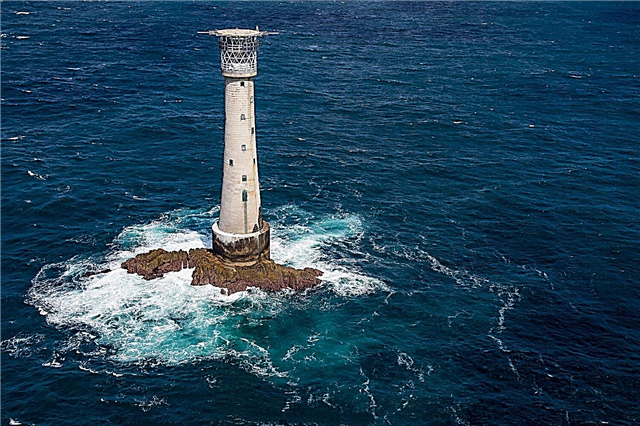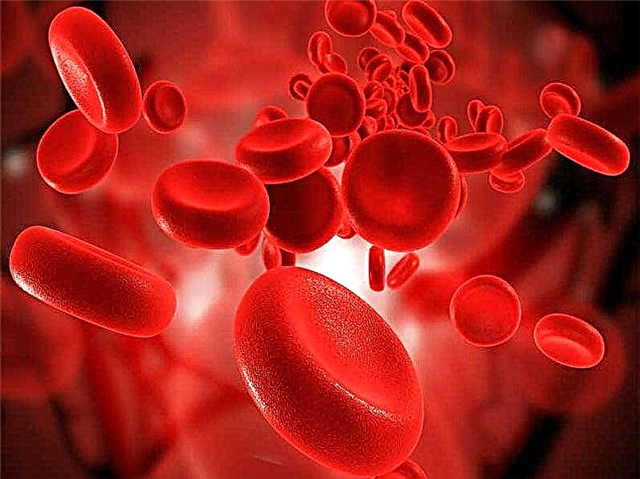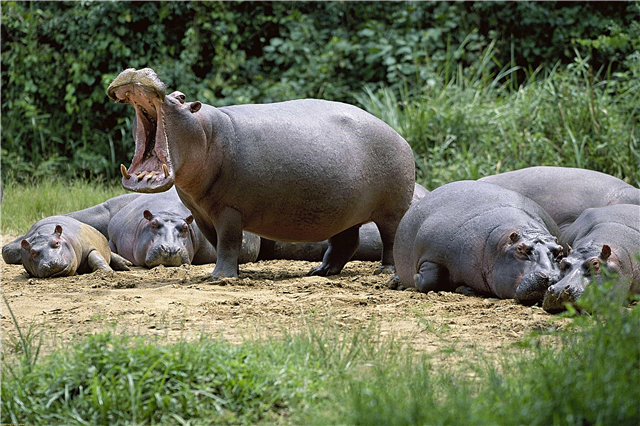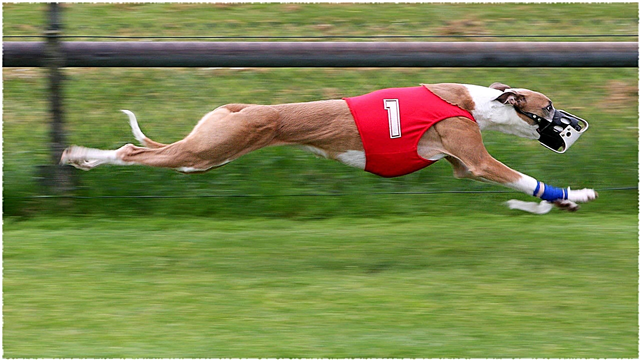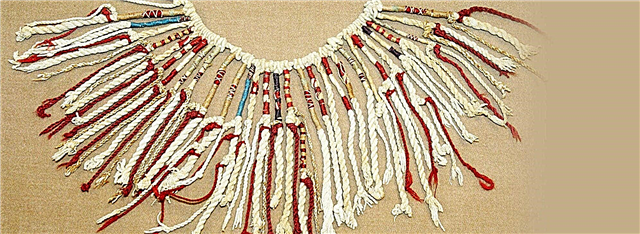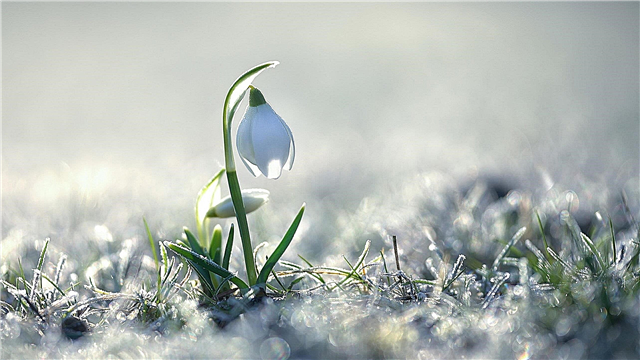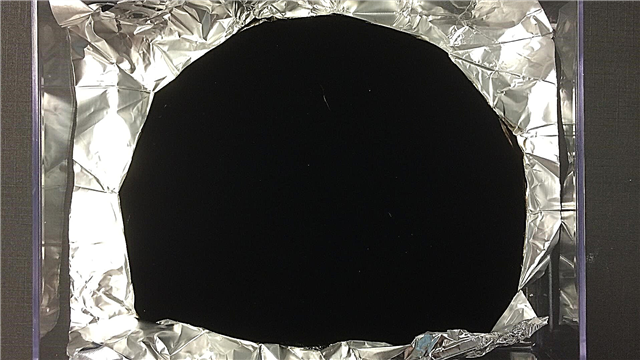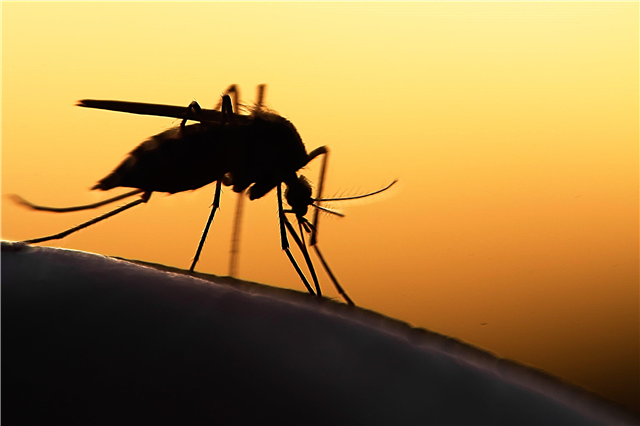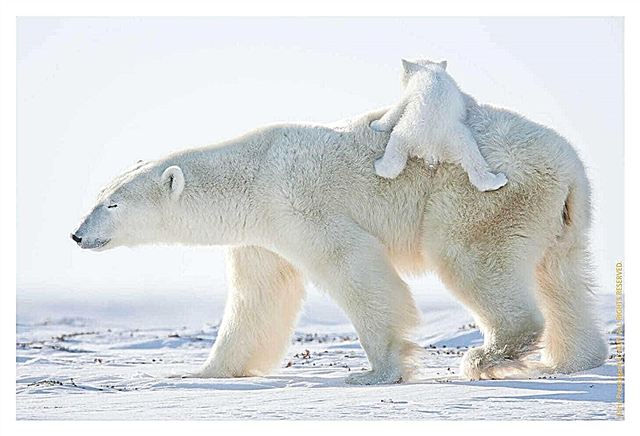
In polar bear females, offspring are born in the middle of winter. The polar bear cubs are completely helpless; they live in a den in which it is warm and dark, as if in an incubator.
The den of polar bears
Even before the birth of the babies, but already in anticipation of the offspring, the female begins to look for a suitable den. Usually she chooses a place somewhere on the shore, but sometimes she finds a convenient place on the ice. Since the den will have to spend all winter, the place should be next to the water. Having chosen a place, the bear equips a couch with a size of two meters and about a meter in height. Prior to the final choice of the den, the female polar bear may try several options, but then choose the most convenient one.
In the den prepared by the bear, air will circulate well, but it will always be warm. The body temperature of the female in the den does not decrease as much as, for example, in a brown bear, the deviation can be as little as five degrees. Throughout the wintering, the bear does not eat anything in the den, her body uses pre-accumulated reserves of subcutaneous fat.
Bear cubs
Cubs are born in December, usually two of them. Their body does not reach thirty centimeters in length, weight - no more than eight hundred grams. Cubs feed exclusively on breast milk. Mother periodically wakes up and checks whether everything is ok with the cubs, then falls asleep again. Kids also sleep all the time when they don’t eat.Females of a polar bear are able to begin to bear offspring at the age of about four to five years and remain reproductive sometimes up to 20 years or more.
For the first time, a bear takes her cubs out of the den in March or April, when they are already three or four months old. By this time, the cubs already weigh ten to fifteen kilograms and are strong enough to play on the snowy plain themselves. After several days outside the den, the she-bear sets off on ice near the sea. At this time, the cubs still continue to feed on its milk, but are already beginning to learn how to get their own food.
Another year and a half passes before the young bears are separated from their mother. They begin their adult life, and the she-bear leaves in search of a new male. At the end of April or sometimes at the beginning of May, the female releases substances with a specific smell, to which males necessarily come. If there are several of them, then they first choose the strongest, and only then the pairing process takes place. Immediately after this, the estrus in the female bear ceases, and the males leave it - they never participate in the breeding of offspring.
While female polar bears sleep in their dens throughout autumn and winter, the remaining adult bears lead their usual lives: they hunt, eat, and walk along the shore. In those months when pregnant females bring offspring and begin to feed them, the remaining bears willingly get their own seals from wormwood to feed themselves. In the spring, when the mother first takes her babies out of the den, she prefers not to catch the eye of the males, since it was at this time that the adult bears rush.And finally, with the onset of summer, polar bears happen to go on land and seek food there, although those individuals that remain on the ice are better fed for the winter.



